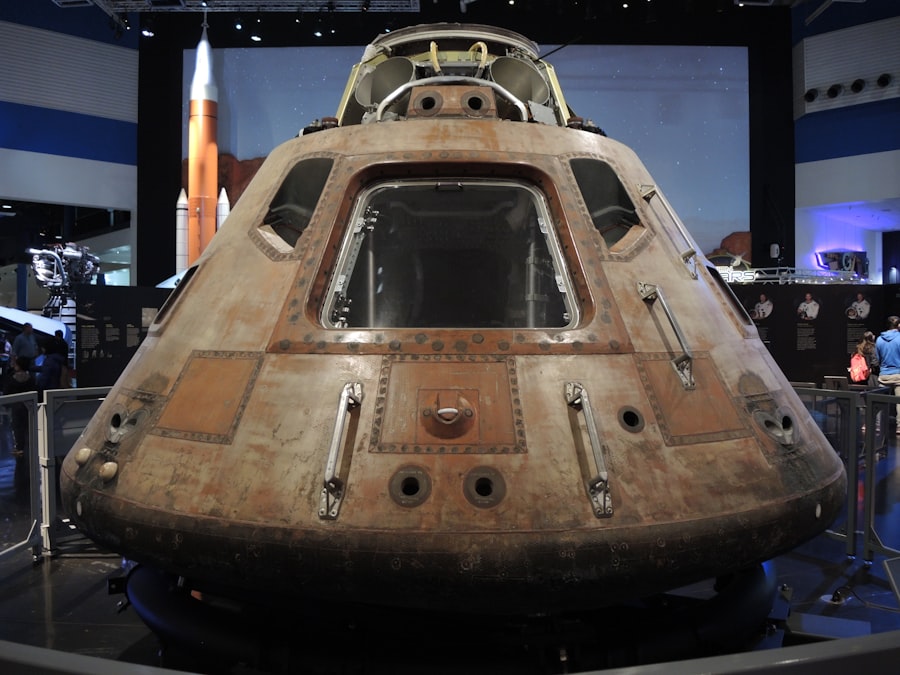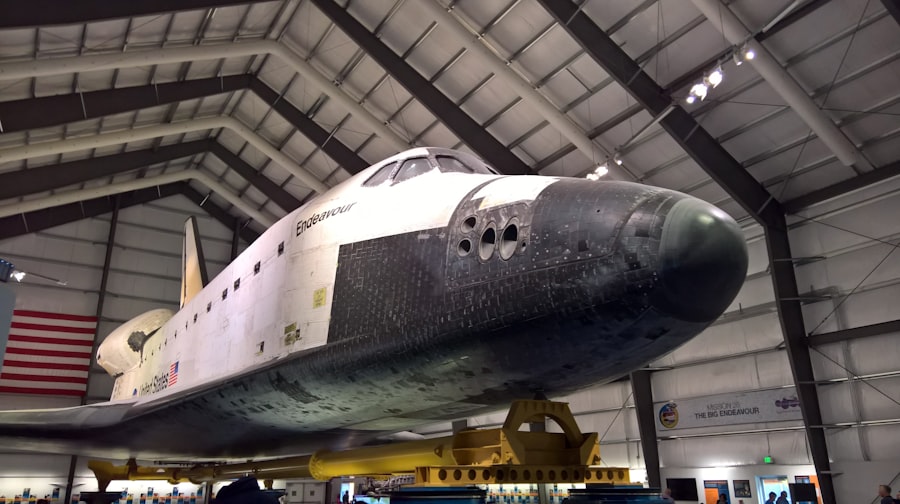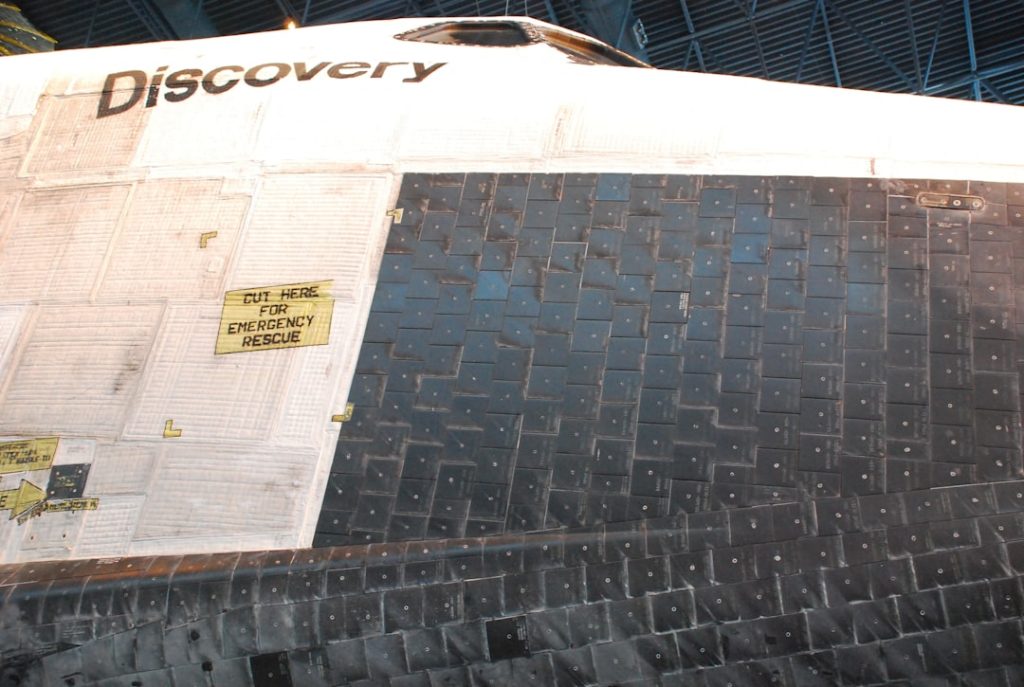The Space Shuttle Discovery, designated OV-103, is one of the most iconic spacecraft in the history of human spaceflight. Its journey began in the early 1970s when NASA initiated the Space Shuttle program, aiming to create a reusable spacecraft that could transport astronauts and cargo to low Earth orbit. Discovery was the third shuttle to be built, following Columbia and Challenger, and its construction commenced in 1979.
The shuttle was named in honor of previous ships that explored uncharted territories, including the HMS Discovery, which was used by Captain James Cook in his voyages of exploration. Discovery’s first flight took place on August 30, 1984, during the STS-41-D mission. This mission marked a significant milestone for NASA as it demonstrated the shuttle’s capabilities to deploy satellites and conduct scientific experiments in space.
Over the years, Discovery became synonymous with groundbreaking missions, including the deployment of the Hubble Space Telescope in 1990 and numerous resupply missions to the International Space Station (ISS). Its operational history spanned over three decades, during which it completed a total of 39 missions, making it the most flown spacecraft in the shuttle fleet.
Key Takeaways
- The Discovery Space Shuttle was the third of NASA’s five space shuttles and was named after famous ships of exploration.
- The shuttle had a unique design with features such as its three main engines, solid rocket boosters, and payload bay.
- The Discovery completed 39 missions, including deploying satellites, conducting scientific research, and servicing the Hubble Space Telescope.
- The crew of the Discovery underwent extensive training to prepare for the challenges of space travel and conducting experiments in microgravity.
- The legacy of the Discovery Space Shuttle includes advancing scientific knowledge, inspiring future generations, and paving the way for international cooperation in space exploration.
The Design and Features of the Discovery Space Shuttle
The design of the Discovery Space Shuttle was a marvel of engineering, combining advanced technology with a focus on reusability. The shuttle consisted of three main components: the orbiter, the solid rocket boosters (SRBs), and the external tank. The orbiter itself was equipped with a unique thermal protection system that allowed it to withstand the extreme temperatures of re-entry into Earth’s atmosphere.
This system included thousands of heat-resistant tiles made from silica and other materials, which were meticulously arranged to protect the shuttle’s structure. In addition to its thermal protection, Discovery featured a sophisticated avionics system that enabled precise navigation and control during flight. The cockpit was equipped with state-of-the-art displays and controls, allowing astronauts to monitor various systems and make critical decisions during missions.
The shuttle’s payload bay was another notable feature, capable of carrying large cargo such as satellites, scientific instruments, and even components for the ISS. This versatility made Discovery an invaluable asset for a wide range of missions, from deploying scientific instruments to conducting experiments in microgravity.
The Missions and Accomplishments of the Discovery Space Shuttle

Discovery’s operational history is marked by numerous significant missions that contributed to our understanding of space and advanced human exploration. One of its most notable accomplishments was the deployment of the Hubble Space Telescope during STS-31 in April 1990. This mission revolutionized astronomy by providing unprecedented views of distant galaxies and celestial phenomena.
The Hubble’s ability to capture high-resolution images from space has led to countless discoveries and has fundamentally changed our understanding of the universe. In addition to its scientific contributions, Discovery played a crucial role in assembling and resupplying the International Space Station. Over the course of its missions, it delivered essential modules and supplies that were vital for the ISS’s construction and operation.
Notably, during STS-133 in February 2011, Discovery delivered the Permanent Multipurpose Module (PMM), which provided additional storage space for crew supplies and equipment. This mission underscored Discovery’s importance as a workhorse for NASA’s human spaceflight program.
The Crew and Training for the Discovery Space Shuttle
| Training Area | Duration | Focus |
|---|---|---|
| Flight Training | 6 months | Simulated spaceflight scenarios |
| Spacewalk Training | 12 months | Practice for extravehicular activities |
| Robotic Arm Training | 9 months | Operating the shuttle’s robotic arm |
| Emergency Procedures | 3 months | Handling emergency situations in space |
The success of each mission undertaken by Discovery was largely dependent on the skilled crews that operated the shuttle. Astronauts underwent rigorous training programs designed to prepare them for the challenges of spaceflight. This training included simulations of launch and landing scenarios, emergency procedures, and hands-on experience with shuttle systems.
Astronauts also participated in physical fitness programs to ensure they were in peak condition for the demands of space travel. Crew members were selected based on their expertise in various fields, including engineering, science, and medicine. Each astronaut brought unique skills to their missions, enhancing the overall effectiveness of the team.
For instance, during STS-41-D, astronaut Judith Resnik became one of the first female shuttle pilots, paving the way for greater diversity within NASA’s astronaut corps. The collaborative nature of training fostered strong teamwork among crew members, which was essential for executing complex tasks during missions.
The Legacy of the Discovery Space Shuttle
The legacy of the Discovery Space Shuttle is profound and multifaceted. It not only served as a platform for scientific research but also played a pivotal role in advancing international cooperation in space exploration. Through its numerous missions, Discovery helped establish partnerships with various space agencies around the world, including those from Europe, Japan, and Canada.
These collaborations have laid the groundwork for future joint missions and have fostered a spirit of unity in exploring outer space. Moreover, Discovery’s contributions to technology and engineering have had lasting impacts beyond space exploration. The advancements made in materials science, avionics, and robotics during its development have influenced various industries on Earth.
For example, technologies developed for thermal protection systems have found applications in aerospace engineering and even in consumer products like fire-resistant clothing. The shuttle’s legacy continues to inspire new generations of scientists, engineers, and explorers who seek to push the boundaries of human knowledge.
The Impact of the Discovery Space Shuttle on Space Exploration

The impact of the Discovery Space Shuttle on space exploration is immeasurable. It served as a catalyst for numerous scientific advancements and technological innovations that have shaped our understanding of space. The shuttle’s ability to carry large payloads allowed for extensive research opportunities in microgravity environments.
Experiments conducted aboard Discovery have led to breakthroughs in fields such as materials science, biology, and physics. One notable example is the Protein Crystal Growth experiment conducted during STS-63 in 1995. This experiment aimed to grow protein crystals in microgravity to better understand their structures and functions.
The results from this research have implications for drug development and disease treatment on Earth. Additionally, Discovery’s role in deploying satellites has enhanced our capabilities in Earth observation, telecommunications, and global positioning systems (GPS), further demonstrating its far-reaching influence on modern society.
The Retirement and Final Flight of the Discovery Space Shuttle
After an illustrious career spanning over three decades, Discovery completed its final flight on March 9, 2011, during STS-133. This mission marked a bittersweet moment for NASA as it bid farewell to one of its most beloved shuttles. During STS-133, Discovery delivered critical supplies to the ISS and brought back valuable scientific data gathered during its previous missions.
The flight was celebrated not only for its accomplishments but also for its emotional significance as it represented the end of an era in human spaceflight. Following its retirement from active service, Discovery was transported to the Smithsonian National Air and Space Museum’s Steven F. Udvar-Hazy Center in Chantilly, Virginia.
There, it was meticulously restored and put on display for future generations to appreciate its contributions to space exploration. The retirement ceremony was attended by many former astronauts who had flown aboard Discovery, highlighting the deep connections formed during their time in space.
The Future of Space Exploration and the Role of the Discovery Space Shuttle
As humanity looks toward future endeavors in space exploration, the legacy of the Discovery Space Shuttle continues to resonate within NASA and beyond. While new spacecraft are being developed—such as NASA’s Artemis program aimed at returning humans to the Moon—Discovery’s pioneering spirit serves as a reminder of what can be achieved through innovation and collaboration. The lessons learned from its missions inform current practices in spacecraft design and mission planning.
Moreover, Discovery’s role in fostering international partnerships remains relevant as nations collaborate on ambitious projects like Mars exploration and beyond. The spirit of cooperation exemplified by Discovery’s missions is essential for addressing complex challenges that lie ahead in space exploration. As we venture into new frontiers—whether through crewed missions to Mars or robotic explorations of distant celestial bodies—the foundational work laid by Discovery will undoubtedly influence future generations of explorers seeking to unlock the mysteries of our universe.


